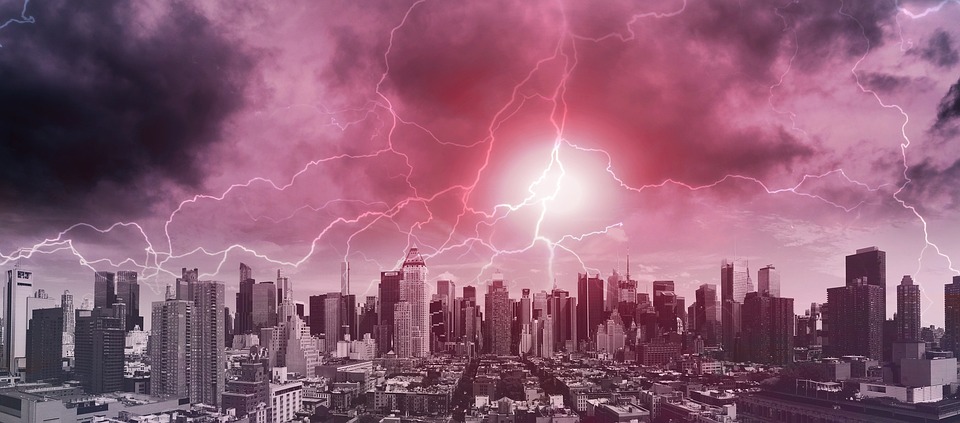Rising sea levels, a direct consequence of global warming, pose a significant threat to small island nations. These islands, often characterized by low elevations and limited land area, are particularly vulnerable to the impacts of climate change, including submersion due to rising seas and environmental degradation. This phenomenon has led to the alarming concept of “sinking islands,” where entire nations face existential threats from both rising waters and the resulting socio-economic challenges.
How Global Warming Causes Islands to Sink
The science behind rising sea levels is primarily driven by two factors:
– Melting Polar Ice Caps and Glaciers: As global temperatures rise, ice sheets in Greenland and Antarctica are melting at unprecedented rates, contributing significantly to sea level rise. Current estimates suggest that these regions lose hundreds of billions of tons of ice annually.
– Thermal Expansion of Seawater: Warmer ocean temperatures cause seawater to expand, further elevating sea levels. Since the late 19th century, global sea levels have risen by approximately 0.2 meters, with projections indicating an increase of up to 2 meters by the end of this century if greenhouse gas emissions continue unabated[1][4].
The combination of these factors results in a heightened risk for low-lying islands, making them susceptible to submersion and other environmental challenges.
Islands Most Threatened by Global Warming
Several island nations are at the forefront of this crisis:
Maldives
– Location: Indian Ocean.
– The Maldives is one of the lowest-lying countries globally, with an average elevation of just 1.5 meters above sea level. Rising sea levels threaten its very existence through submersion and coastal erosion, leading to economic challenges reliant on tourism and fishing[2].
Kiribati
– Location: Pacific Ocean.
– Kiribati faces severe land loss due to rising seas, prompting government actions such as purchasing land in Fiji for future relocation of its inhabitants. The nation grapples with the reality of forced migration as its territory diminishes[2][5].
Tuvalu
– Location: Pacific Ocean.
– This small nation is projected to become uninhabitable within decades due to rising sea levels. The environmental and cultural consequences include displacement and loss of heritage as communities are forced to relocate[2][5].
Marshall Islands
– Location: Pacific Ocean.
– The Marshall Islands are experiencing significant threats from flooding and saltwater intrusion into freshwater supplies. Climate change exacerbates existing issues like food security and limited access to potable water[2][5].
Other Islands at Risk
Other island nations also face severe risks from climate change:
– Fiji: Some coastal communities are already relocating due to rising seas despite being larger than many sinking islands.
– Solomon Islands: Entire islands have disappeared in recent years due to rising waters.
– Seychelles: This Indian Ocean nation is threatened by beach erosion and higher sea levels, jeopardizing its tourism-dependent economy[2][5].
Social and Environmental Impact of Sinking Islands
The implications of sinking islands extend beyond physical land loss:
– Forced Migration: Many inhabitants may become climate refugees, seeking refuge in other countries as their homelands become uninhabitable.
– Cultural Loss: Displacement threatens the cultural identity and heritage of small island nations.
– Environmental Degradation: Rising seas contribute to coral reef destruction, loss of biodiversity, and saltwater intrusion that damages agricultural land[5][6].
Efforts to Combat Sea Level Rise
Global initiatives aim to address these challenges:
– International Treaties: Agreements like the Paris Agreement focus on reducing greenhouse gas emissions globally.
– Local Adaptation Strategies: Countries are implementing measures such as building sea walls, land reclamation projects, and even planning floating or elevated cities. For instance, the Maldives is exploring innovative solutions like artificial islands[1][3].
Despite these efforts, many adaptation strategies may only serve as temporary fixes in light of rapidly rising sea levels.
Frequently Asked Questions (FAQs)
1. Why are islands sinking due to global warming?
– While islands aren’t technically “sinking,” they are being submerged by rising sea levels caused by melting ice caps and thermal expansion.
2. Which island is most at risk of sinking?
– The Maldives is among the most at-risk nations, with projections indicating large parts could be underwater within decades.
3. Can anything be done to save these sinking islands?
– Global efforts are ongoing; however, many islands are implementing adaptation strategies that often provide only temporary relief.
4. What happens to the people living on sinking islands?
– Many may become climate refugees, facing relocation challenges as they seek new homes elsewhere.
5. How fast are sea levels rising?
– Global sea levels have been rising at an average rate of 3.3 millimeters per year, with projections indicating acceleration due to ongoing climate change impacts[1][4].
Conclusion
Addressing global warming is urgent for protecting vulnerable island nations from extinction. Global cooperation is essential in reducing greenhouse gas emissions while providing support for climate adaptation measures. Raising awareness about the plight of sinking islands is critical before it’s too late for these communities facing existential threats from climate change.

Kyle Whyte is a notable scholar and professor at the University of Michigan, holding positions such as the George Willis Pack Professor in the School for Environment and Sustainability and Professor of Philosophy. Specializing in environmental justice, his work critically examines climate policy and Indigenous peoples’ ethics, emphasizing the nexus between cooperative scientific endeavors and Indigenous justice. As an enrolled Citizen Potawatomi Nation member, he brings a vital perspective to his roles as a U.S. Science Envoy and member of the White House Environmental Justice Advisory Council. His influential research is supported by various prestigious organizations including the National Science Foundation, and disseminated through publications in high-impact journals. Kyle actively contributes to global Indigenous research methodologies and education, with affiliations to numerous institutes and societies dedicated to traditional knowledge and sustainability. Recognized for his academic and community engagement, Kyle has earned multiple awards and served in various visiting professorships. His efforts extend to leadership positions on boards and committees focused on environmental justice nationwide.
